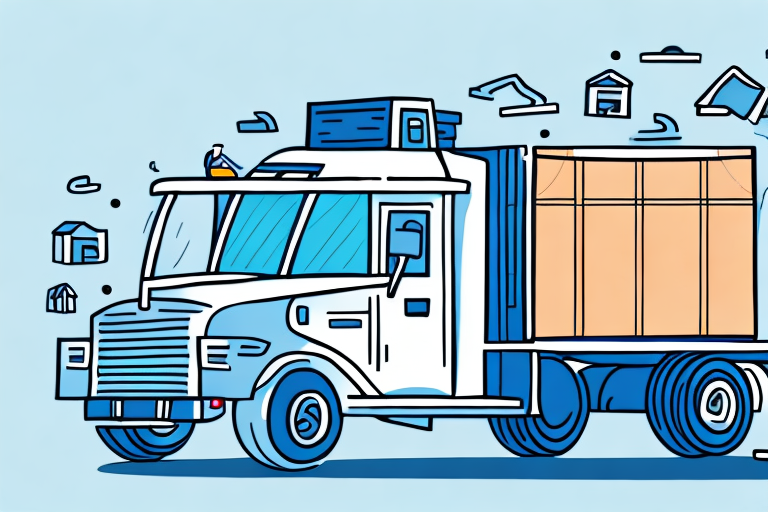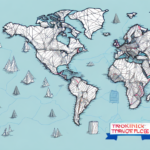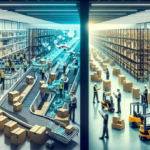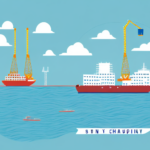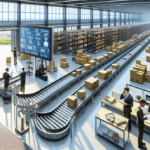Understanding Shipping vs. Delivery in E-commerce
Definitions and Differences
In the realm of e-commerce, shipping and delivery are terms that are frequently used interchangeably, yet they signify distinct stages of the order fulfillment process. Shipping refers to the act of dispatching goods from a warehouse or distribution center to a specified location. This involves the handling, packaging, and transporting of products, often utilizing various carriers and logistical methods.
Conversely, delivery pertains to the final step where the shipped goods reach the customer's doorstep. This stage may involve last-mile logistics, including local transportation and final handover to the customer. Understanding this distinction is crucial for effectively managing logistics, reducing costs, and enhancing customer satisfaction.
Importance in E-commerce
Supply Chain and Inventory Management
Effective differentiation between shipping and delivery processes is vital for optimizing supply chain operations. Proper management ensures timely inventory replenishment and minimizes delays that can disrupt the entire supply chain. According to a ShipScience report, businesses that streamline their shipping and delivery processes experience up to a 20% increase in operational efficiency.
Customer Expectations
Today's consumers demand rapid and reliable shipping and delivery options. A survey by Statista indicates that 79% of online shoppers consider fast shipping to be a key factor in their purchasing decisions. Providing clear information and reliable services in both shipping and delivery phases can significantly enhance customer satisfaction and loyalty.
Financial Impact
Shipping and delivery costs directly influence a business's bottom line. Companies must balance offering competitive shipping rates and maintaining profitability. Strategies such as optimizing packaging, negotiating better rates with carriers, and utilizing third-party logistics providers can help manage these costs effectively.
Logistics of Shipping and Delivery
Shipping Process
The shipping process begins once an order is placed. Products are picked from the inventory, packaged securely, and prepared for transit. Factors such as package dimensions, weight, and destination determine the most suitable shipping method. Advanced technologies like automated warehousing systems have streamlined this process, reducing errors and increasing speed.
Delivery Process
Upon arrival at the local distribution hub, the package enters the delivery phase. Depending on the chosen delivery method, it may be handed over to regional carriers or delivered directly by the main carrier. Innovations like drone delivery and autonomous vehicles are revolutionizing the delivery landscape, making it faster and more efficient.
The Role of Carriers
Carriers play a pivotal role in both shipping and delivery. Major carriers like FedEx, UPS, and USPS offer a range of services tailored to different business needs. Each carrier has its strengths in terms of speed, cost, and reliability, making it essential for businesses to choose the right partner.
Costs Calculation
Shipping and delivery costs are influenced by several factors, including package size, weight, distance, and delivery speed. Additional services such as insurance, tracking, and signature confirmation can further impact the overall cost. Businesses often employ shipping calculators and analytical tools to estimate and manage these expenses effectively.
Shipping and Delivery Methods
Standard Ground Shipping
Standard ground shipping is the most commonly used method, offering a balance between cost and delivery time. Typically, it ensures delivery within 2-5 business days, making it suitable for non-urgent shipments.
Express Shipping
Express shipping provides faster delivery options, including next-day or two-day services. While more expensive, it caters to customers requiring quick turnaround times. According to the latest industry trends, express shipping has seen a 15% increase in demand over the past year.
International Shipping
For businesses expanding globally, international shipping is essential. This method involves navigating customs regulations, duties, and taxes, which can complicate the process. Utilizing experienced international carriers can mitigate these challenges and ensure timely deliveries.
Pickup Options
Alternative delivery methods like curbside or in-store pickup offer flexibility to customers. These options can reduce shipping costs and delivery times, especially for local customers. They also provide a convenient solution for customers who prefer to collect their orders personally.
Challenges and Solutions
Common Problems
- Lost or Damaged Packages: Despite best efforts, packages may occasionally be lost or damaged. Implementing robust tracking systems and choosing reliable carriers can minimize this risk.
- Delays: Unpredictable factors such as weather conditions or logistical bottlenecks can cause delays. Offering multiple shipping options and maintaining transparent communication can help manage customer expectations.
- Inaccurate Shipping Information: Incorrect addresses can lead to failed deliveries. Utilizing address validation tools and confirming details with customers during the checkout process can reduce errors.
Best Practices
- Set Clear Shipping and Delivery Policies: Clearly outline your shipping methods, costs, delivery times, and return policies to avoid misunderstandings.
- Choose the Right Carriers: Select carriers that align with your business needs in terms of speed, cost, and reliability.
- Optimize Packaging: Use materials that protect products while minimizing size and weight to reduce shipping costs.
- Track Packages: Implement tracking systems to monitor shipments in real-time and proactively address any issues.
- Communicate with Customers: Provide regular updates and responsive customer service to enhance the overall shipping and delivery experience.
Future Trends in Shipping and Delivery
Technological Advancements
The shipping and delivery industry is rapidly evolving with technological innovations. Real-time tracking, artificial intelligence, and automation are enhancing efficiency and accuracy. Technologies like blockchain are being explored for secure and transparent transactions.
Sustainability Efforts
Environmental concerns are driving businesses to adopt sustainable shipping practices. This includes using eco-friendly packaging, optimizing delivery routes to reduce carbon emissions, and exploring alternative transportation methods. Consumers increasingly prefer companies that demonstrate a commitment to sustainability.
Same-day and On-demand Delivery
As consumer expectations for speed escalate, same-day and on-demand delivery services are becoming more prevalent. These services cater to the need for immediate gratification, especially in urban areas where logistics can be more efficiently managed.
Contactless Delivery
The COVID-19 pandemic has accelerated the adoption of contactless delivery methods. This approach minimizes physical interaction, enhancing safety and convenience for both customers and delivery personnel.
Multimodal Transportation
Integrating multiple modes of transportation, such as air, sea, and land, can optimize shipping routes, reduce costs, and improve delivery times. Multimodal transportation offers flexibility and resilience against disruptions in any single mode.
Conclusion: Enhancing E-commerce Success Through Effective Shipping and Delivery
While shipping and delivery might appear as mere operational components, they are integral to the success of an e-commerce business. By comprehensively understanding and effectively managing these processes, businesses can improve efficiency, reduce costs, and most importantly, meet or exceed customer expectations. Staying abreast of industry trends and continuously optimizing logistics strategies will ensure sustained growth and customer satisfaction in the competitive e-commerce landscape.













